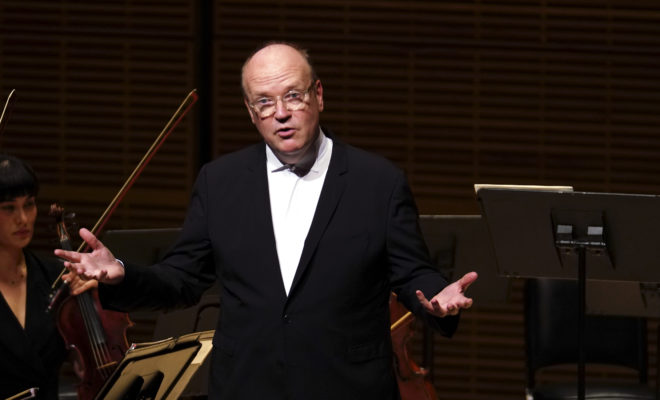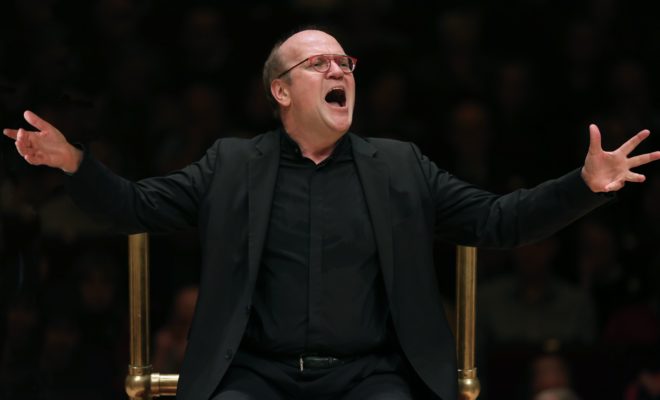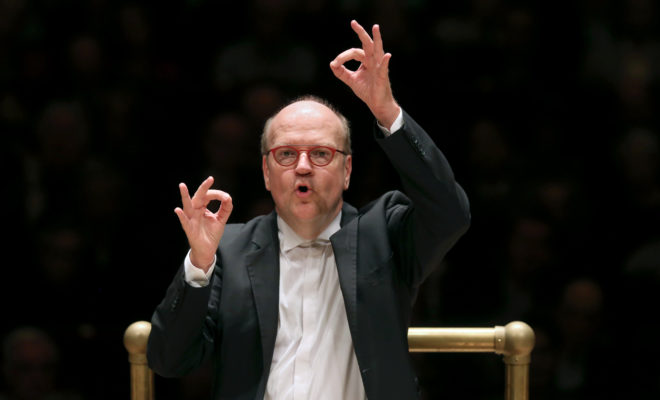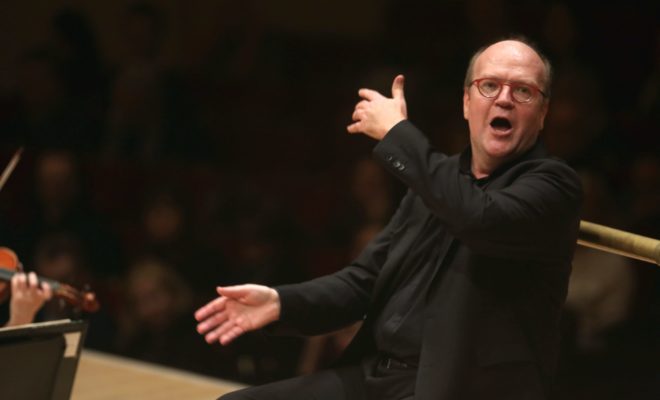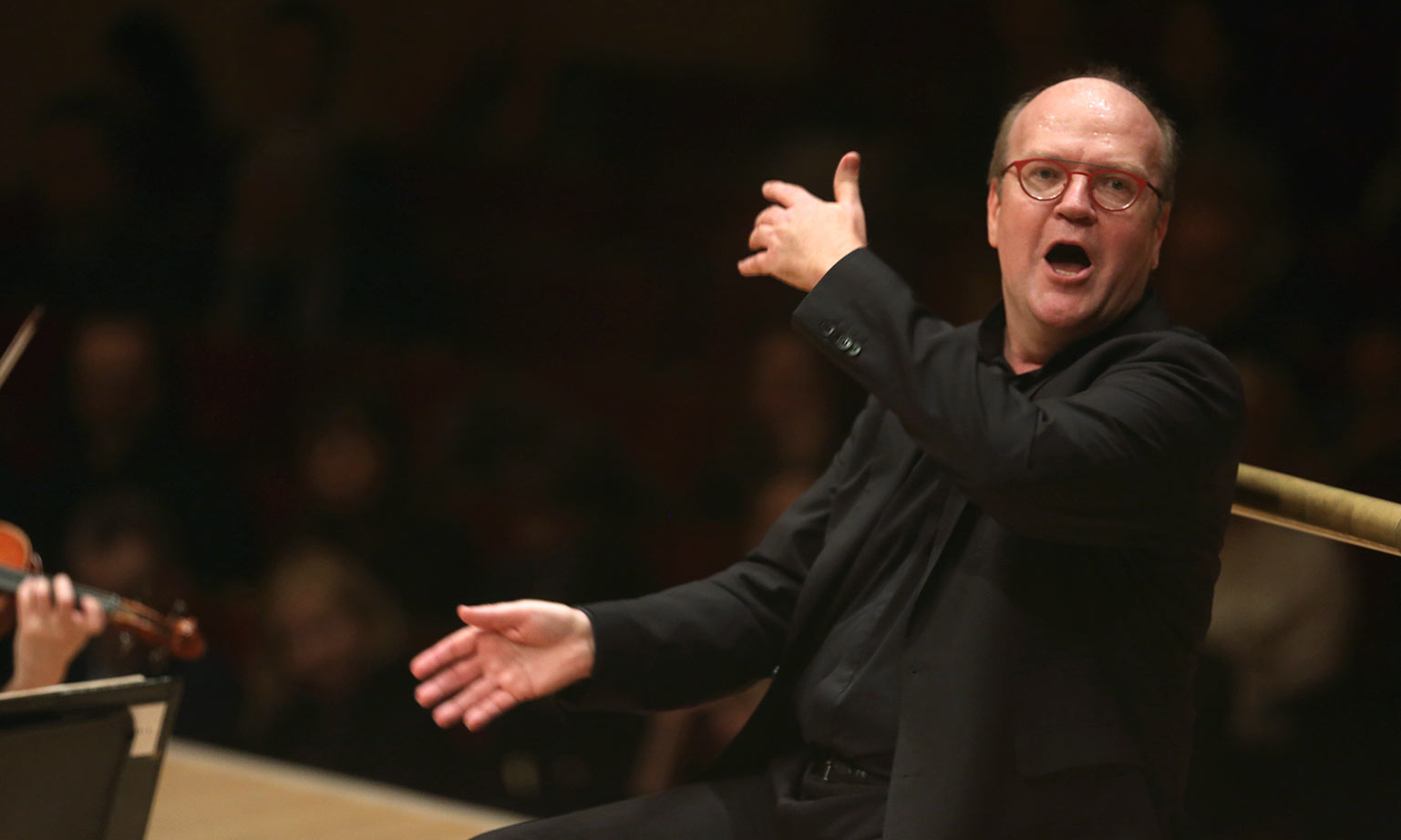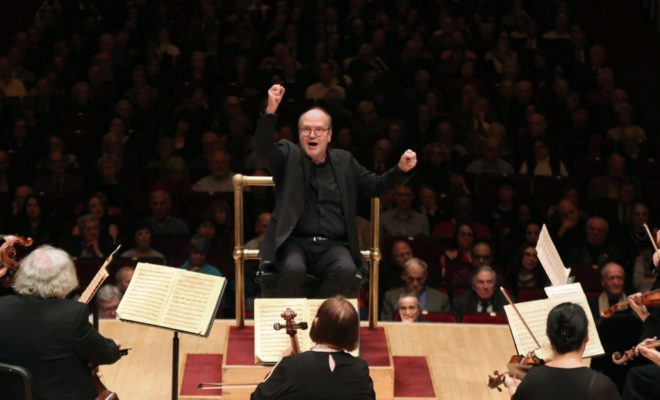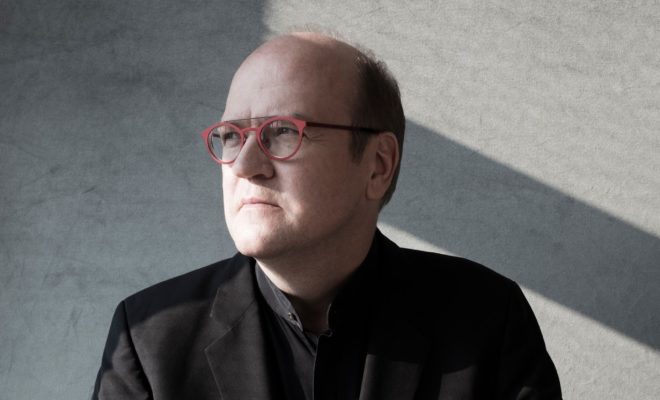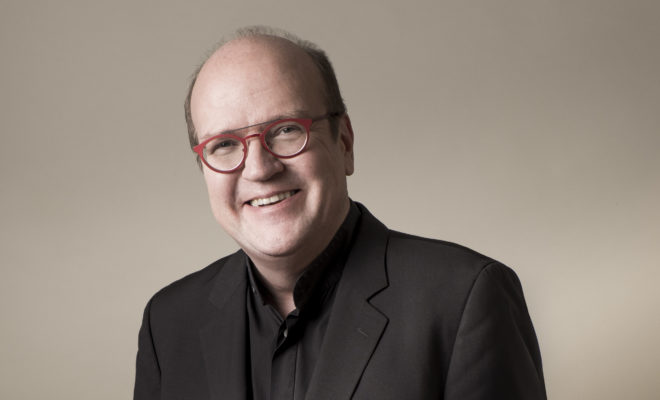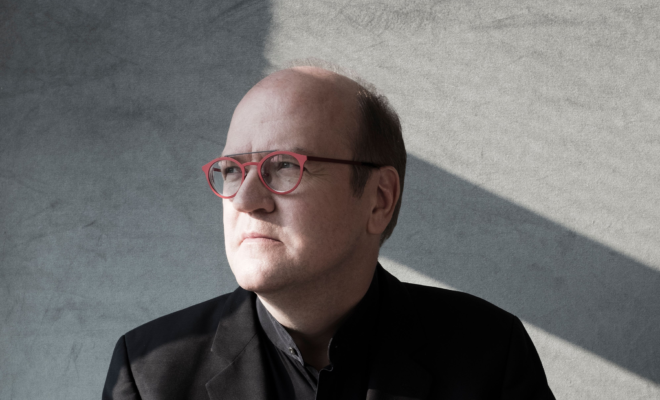Considering the influence of Bach’s musical hero Buxtehude, let us focus our attention on one of Bach’s very first cantatas, known as the “Actus tragicus”. While there is much speculation about this work’s purpose and date of composition, it was probably composed sometime in 1707 or 1708 during Bach’s short tenure as organist at the Blasiuskirche (Church of St. Blaise) in Mühlhausen.
The “Actus Tragicus” is the work of a composer in his early twenties, though for comparison’s sake Bach was ancient compared to Mozart or Mendelssohn who at the same age had already produced a hefty catalogue of works. What is mind-blowing and sets Bach apart is the fact that Bach at this age is creating work at an unprecedented high level of musical and artistic quality. This cantata doesn’t sound like a youthful experiment or a copycat of important works by his mentors or models. From the first bar we hear Bach’s unique and distinctive voice already fully formed and ready to take over the musical world.
Was Bach a child prodigy?
Nothing we know of his youth (and we don’t know much) points to that direction. It is hard to imagine he did not show exceptional gifts from an early age, but there is no history available to evaluate the speed and time frame of his development.
Bach was born in a family system which had already trained many generations of musicians, in a society which did not foster individualistic values. He followed a well-trodden path the way his siblings and cousins had done for as long as they could remember. A Bach had to become a musician: it was God’s plan, and there was not much doubt to be entertained. It was expected that every member of the family followed a pre-established path, dispensing and sharing a knowledge that had been trickling down from one member of the clan to the next for generations.
In Johann Sebastian’s case, it is was his elder brother, Johann Christoph, who took over his education after his parents’ early death. We have available (possibly romanticized) stories about how the young Johann Sebastian would copy manuscripts at night using candlelight. Did he try to emulate his models and write some music very early on? Most probably.
It is hard to believe that Bach did not write anything before he penned his first known masterpiece, the Capriccio sopra la lontananza del fratello dilettissimo BWV 992 (“Capriccio on the departure of a beloved brother”) for harpsichord, which he composed in Ohrdruf in 1704 at age nineteen. There must be many missing links between his very early years and his Capriccio.
Sonatina
Bach’s “Actus tragicus” cantata, dating from possibly 1707, opens with the instrumental introduction titled Sonatina. The instrumentation reminds us of Buxtehude’s cantatas, with two recorders, two violas da gamba and continuo (organ with what was probably an 8-foot violone). We are still far away from what will become the nucleus of the standard late baroque orchestra (violin I and II, viola and continuo). This very intimate set-up was probably in accordance with the practice at Bach’s church in Mühlhausen.
The archaic grouping of instruments can make us forget an extremely innovative feature: Bach’s use of two recorders. Because the instrument is not powerful by nature, it was common for composers of that time to use recorders in unison. What is striking about the recorder parts of the Sonatina from BWV 106 is that they are written in quasi-unison. On pedal notes the two recorders play alternatively a battement or oscillation of a minor or major second which creates a very expressive friction. At one point towards the end the oscillation becomes wider. These battements are the only moments when the recorder line is expanded beyond the unison, except for a few brief passages in thirds. For the rest they always play exactly the same line.
This is an instrumental texture I have never encountered anywhere else in music from the 18th-century; it is however very common in modern music. Exploring the unison and how it can expand and develop into multiple lines or chords has kept many 20th– and 21st-century composers very busy. But in 1707, a very young Bach was already exploring this device in order to create new levels of expression.
A lot more can be said about the mesmerizing power of this Sonatina, whose instrumental colors literally pop out of a magic box. The recorder line seems to have been delicately dropped on a cloud of gambas supported by a steady and often pedal-like bass line. The color of the organ continuo acts like a gel which unifies the string textures and allows the recorders to shine in the sky.
This is the stuff of genius. Its twenty-some-year-old composer was about to take the musical world by storm, mostly unnoticed. How thankful we must be for the generations of historians, musicologists and musicians who have unearthed this ultimate treasure trove for our benefit.
I don’t believe in reincarnation, but if I would, there would be little doubt in my mind that Bach was an Egyptian pyramid builder in one of his previous lives.
He is one of the very few composers who designs large musical structures following a symmetrical mirror-like pattern with a pivotal clef de voûte (keystone) right in the middle. Bach will incorporate this structure throughout his career, including in some of his grandest compositions: the St. John and St. Matthew Passions and the Goldberg Variations.
The best way to understand this structure is to draw a graphic. The first part is an ascending line leaning to the right, and from the top of that line (which serves as the keystone), a descending line comes down at the same angle. You end up with a nice triangle; put it in three dimensions (because we will need the third dimension for theological purposes), and you get a pyramid.
The “Actus tragicus” is one of Bach’s first pyramids, and also one of his most condensed, which makes a quick journey through it possible. After the opening sonatina, he lines up an ascending succession of musical sections that reach an apex followed by a descending succession built almost symmetrically.
The pyramid starts and ends in E-flat major, the ascending and descending lines are in C minor (with a section in B-flat minor in the descending line), and the keystone section is in F minor. (I’m using the keys of the first version of this cantata known to us, in E-flat major. For practical reasons of pitch to accommodate recorders, the piece is often transposed for performance one full tone higher, in F major.)
Bach’s pyramid is not exclusively musical; it’s also a theological one through the text, hence our tridimensional approach to the structure. The libretto’s author is unknown, but it’s a clever compound of freely written texts and excerpts from the Old and New Testament. The ascending line of the pyramid talks about the Old Covenant as related in the Old Testament (man is a sinner and must prepare to die), the apex is about the transition from the Old to the New Covenant (a plea for Jesus to come and save us from death), and the descending line is about the New Covenant (the promise of resurrection through Jesus, as related in the New Testament).
Warning: here and there I might sound like a preacher… I’m not selling indulgences here, I’m just explaining Bach. Take whatever you want from it.
It’s built like a fluid structure composed of different blocks that unfolds in a seamless flow.
MUSICAL ANALYSIS OF ACTUS TRAGICUS
You may wish to access the score for reference follow the score (version in E-flat major – we are starting after the Sonatina, page 3)
https://ks4.imslp.info/files/imglnks/usimg/b/b5/IMSLP259831-PMLP149635-Bach_BWV106.pdf
First section (E-flat major, modulating at the end to C minor)
It starts with a joyful and confident chorus:
God’s time is the very best time.
The music turns to a quick and busy fugal section (letter A, page 4) with a theme spreading its undulating wings on the word weben (“to weave”, a reference to the common tasks of daily life). Note the long sustained note from the sopranos on the words so lange (“so long”, bottom of page 31):
In Him we live, weave and are, so long as He wills.
It suddenly turns dark with pungent harmonies (letter B, page 7) on the following words:
In Him we die at the right time, when He wills.
Second section (C minor, modulating at the end to F minor – letter C, page 9)
This section is divided in two. In the first one, the solo tenor dialogues with the recorders (always in unison). Note the pleading inflections on Ach, Herr (Ah Lord) and the sighs (appogiaturas) on the words sterben (“die”) and müssen (“must”); also, the bright modulation back to major on the third line of the text (bottom of page 10):
Ah Lord, teach us to think
That we must die
So that we become wise.
The character suddenly changes (second sub-section) when the solo bass takes over from the tenor (letter D, page 11). Structurally we are still in the same section because we remain in the same key, C minor. Note that the violas da gamba disappear here. The mood might seem joyful, but “busy” would be a better word: man is setting his house in order as he prepares for death. The active arpeggiated line for the recorders can be interpreted in many ways here; I personally see it as a figurative expression of the activity of a man getting his house in order in a literal way:
Put your house in order
For you will die
And not remain living.
Third section (keystone section in F minor, modulating at the end to B-flat minor)
This is the very heart of the theological argument as well as the musical form: Jesus is called to help in order to complete the passage from the old to the new order. The Old Covenant is embodied here by the most traditional form or language available to Bach, that is, a dark-hued three-voice fugue (ATB) whose subject (or theme) is built on tense intervals:
It is the old Covenant:
Man, you must die!
After a first exposition of this very stern fugue, a musical ray of light appears over the dark picture as the solo soprano comes in calling for Jesus (top of page 15):
Yes, come, Lord Jesus, come!
After a while the soprano is joined discreetly in the background by the recorders (bar 150, page 15) playing the comforting chorale Ich hab mein Sach Gott heimgestellt (“I have left all that concerns me up to God”). Then the dark fugue resumes (top of page 16), but this time the soprano line floats on top of it (bottom of page 16) with pleas that become more and more insistent while the chorale keeps going in the recorders’ line (bar 165, page 17).
This is figuratively a perfect musical description of a theological key moment: the transition from the old to the new order, staged in an almost operatic way. Because the new order must prevail, Bach brings this transformative section to an end with a musical miracle: as the voices of the Old Covenant vanish on a pedal at the end of the fugue (top of page 20), the solo soprano sings a final plea in the form of a long floating coloratura under which the instruments gradually disappear, leaving the solo voice alone (an apt description of the human condition) on the words Herr Jesu (Lord Jesus). Then Bach adds a full bar of rest for emphasis. This is the tipping point of the pyramid.
This last trick, which is so dramatic and so effective to signal a moment of transformation, comes straight out of the Buxtehude playbook: a fugue interrupted by a sudden flash of virtuosity… This is a staple of the stylus fantasticus. Consider this cantata was composed around two years after Bach’s long visit to Buxtehude in Lübeck The major step up here is that Bach uses this trick for dramatic and theological purposes: this moment when previously well-ordained music is suddenly suspended not only signals the placement of the pivot in the form, it also expresses almost literally the mystery of resurrection, the actual moment when life comes back to the dead. We have ascended the pyramid and reached its apex both on the musical and theological side of things.
The view from the top of a pyramid must be fabulous, and after we reach the tipping point on a musical cliffhanger (the solo soprano voice stopped abruptly on the words Herr Jesu as if contemplating the abyss…), the journey down from the tip of our pyramid starts with a moment of inexpressible beauty.
Fourth section (B-flat minor modulating to C minor, ending in C major – No. 3, page 20)
This section is divided in two sub-sections, exactly like its counterpart on the other side of the mirror (see second section).
At the beginning of the first sub-section, the dying soprano’s plea is answered by a long ascending continuo line covering two full octaves: this is the promise of resurrection. The alto voice sings a combination of Jesus’ last words on the Cross and Psalm 31:
Into Your hands I commit my Spirit;
You have redeemed me, Lord, You faithful God.
Note the inflection of the musical line on the words In deine Hände (“Into Your hands”) which mimics the movement of the head moving down in abandon.
This is the barest combination we have heard from the beginning: one voice and continuo, without recorders, gambas or other singers. This utmost simplicity reinforces the strength of the message and underlines its essential nature. Please note that in the recording I have suggested, the continuo line at this point is played only by the organ tasto solo (left hand only without harmony). This is an interpretative choice made by the conductor John Eliot Gardiner (most performers use organ with either cello or violone here). It puts emphasis on the magical simplicity of the moment. Performers will tell you that it also saves the cellist from a painful moment, as this opening line is very difficult to play, especially in the original key of B-flat minor.
Speaking of B-flat minor, we must remember that this is where the apex section lead us, ending in F major (rather than minor) which is the dominant of B-flat minor. Logically, Bach starts the new sub-section in that key and brings us back progressively to C (minor then major), which was the key of the correspondent section on the other side of the pyramid.
This first sub-section dovetails seamlessly with the second one when the bass voice takes over from the alto (letter B, page 22) on the following words:
Today you will be with me in paradise.
Here the downward motive we heard earlier on the words In deine Hände is expanded to convey even greater abandon, followed by an ascension step by step to picture the arrival to paradise. When we literally get there, Bach underlines the moment with a blossoming harmonic sequence (bars 28 and 30). A final synchronized push upward from the voice and the continuo (bar 38, page 23) introduces another miraculous moment when the alto section returns singing Martin Luther’s chorale Mit Fried und Freud on the text of Simeon’s Song of Praise (the Latin Nunc dimittis):
With peace and joy I travel there
In God’s will,
My heart and mind are confident,
Peaceful and calm.
As God has promised me:
Death has become my sleep.
We remember the story from the Gospel of Luke: the old Simeon recognized the infant Jesus as the Messiah when he held him in his arms during the Presentation of Jesus at the Temple.
As gambas come back at the start of the chorale, we note the absence of recorders in that sub-section, which is part of the mirror effect of the structure (gambas were absent in the corresponding sub-section of the second part).
We definitely land back in C minor when the bass stops singing (bar 55, p. 24). As the chorale goes on in the alto part, the flow of its instrumental accompaniment is interrupted twice on key words: stille (“calm”) in bar 55, and Schlaf (“sleep”) in bar 65. The musical intent could not be clearer.
One personal observation here: there has been some speculation that Bach had a decent baritone voice and sang some of his own music. One such occasion could have been a performance of the secular cantata Durchlauchster Leopold (“Most serene Leopold”) BWV 173a, written for the birthday of Prince Leopold of Anhalt-Köthen in December 1722. The tessitura of the bass part in this cantata is unusually high (obviously intended for a specific singer) and absolutely similar to the one in the section of BWV 106 we are currently discussing. Could it be that Bach, who was most likely working with very limited forces in Mühlhausen, sang the bass part himself at the first performance of the “Actus tragicus”?
Fifth section (E-flat major)
With this final section we land back on our feet at the other end of the pyramid in the same way we started our journey: with chorus, in the key of E-major, and with effusive polyphonic writing. But before setting up a display of contrapuntal fireworks to wrap up the piece with the mandatory Amen, Bach presents a vertically harmonized version of the finale strophe of the chorale In dich hab ich gehoffet Herr (“In You I have placed my hope, Lord”) by Adam Reusner (1533):
Glory, praise, honor and majesty
Be given to You God the Father and the Son,
To the Holy Spirit by name.
Divine strength makes us victorious
Through Jesus Christ! Amen.
The instrumental introduction to this opening chorale section brings us a surprise: the motives played by the recorders are clearly reminiscent of the initial Sonatina (No. 4, page 27). The recorders’ parts in the short instrumental interludes are very florid and festive (again Buxtehude comes to mind). Note also the opposing directions of the soprano part and the recorders in bars 16-20, playing a game of questions and answers.
One unusual aspect of the final double fugue (letter A, page 30) is that Bach uses not only the word Amen: he includes the complete last line of the text. There is a reason for that: the main subject of the fugue (alto part at letter A, page 30, bars 19-22) summarizes the spiritual journey of the whole cantata, that is, a slow descent towards death followed by an ascension leading to the light and joy of resurrection (basically: a reversed pyramid), all of this “through Jesus Christ” as the text reminds us. We have come full circle.
One can’t help finding humor in the final two chords of the cantata: a soft cadence that vanishes quickly, like a reminiscence of the softness of the very first chords of the opening Sonatina.
Interestingly, the return of the motives of the initial Sonatina at the top of the fifth and final section allows us to envision an even larger pyramid. Structurally speaking, instead of having the Sonatina standing by itself as an introduction to the bigger structure, we can integrate it in the first section of the piece and find its equivalent in the chorale at the beginning of the final section (thanks to the motives in the recorder parts, the whole chorale section becomes the mirror counterpart of the Sonatina). As it’s often the case with Bach’s music, it can be analyzed in many different ways, and each one brings its lot of discoveries and surprises.
A fully-formed masterpiece
The “Actus tragicus” cantata, the work of a twenty-two or twenty-three-year-old composer, is more than just a youthful attempt or a glimpse of what’s to come: it’s already a masterpiece produced by a fully formed genius. Of course, Bach’s style in his compositions for the church will change with time: his cantatas and oratorios will incorporate the innovations of Italian opera (especially the combination of secco recitative and aria da capo), the orchestration will become more luxurious and more varied, and the audacity and scale of the contrapuntal writing will reach heights never heard before.
The magnitude of Bach’s output to come leaves us in complete awe; consider however that everything was already in place when, in 1707 or 1708, shortly after starting in his new job in Mühlhausen, he accepted a modest commission from a local member of his congregation to compose a funeral cantata for four voices and a few instruments. The depth and emotional power of its music, together with the intellectual soundness of its theological architecture, was something that had never been heard or imagined before.
Program
Johann Sebastian Bach
Gottes Zeit ist die allerbeste Zeit, BWV 106 aka Actus tragicus


